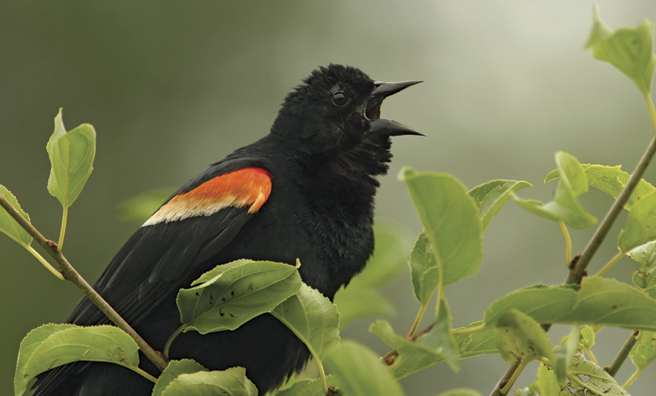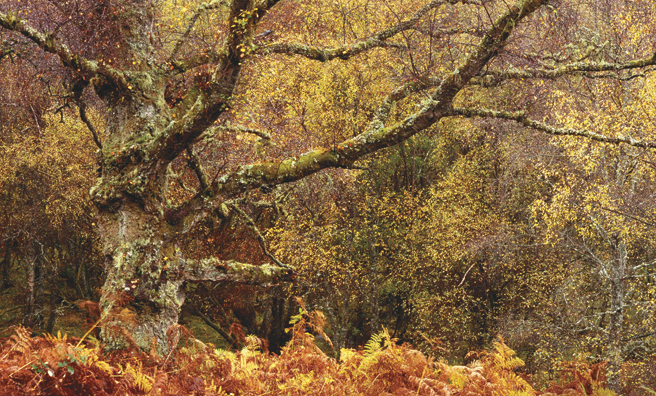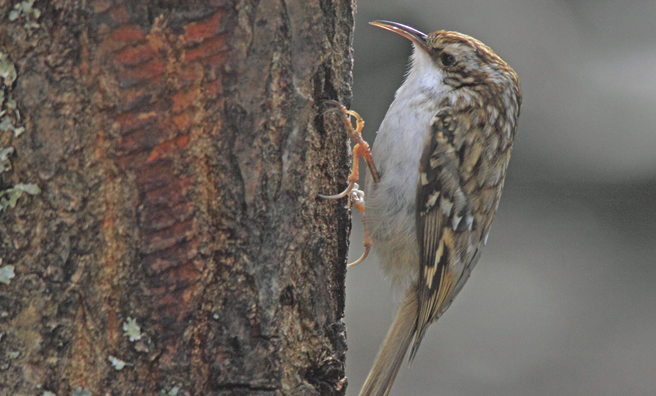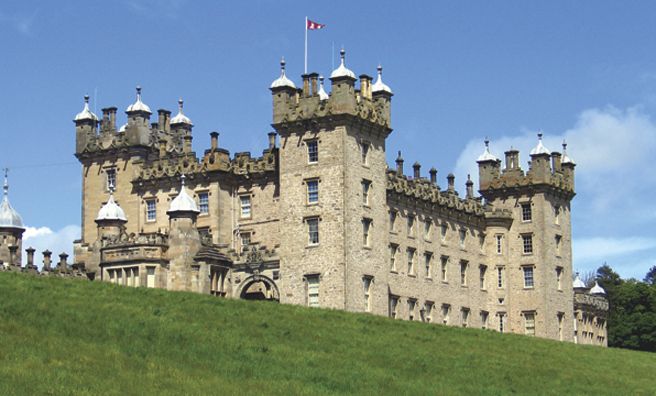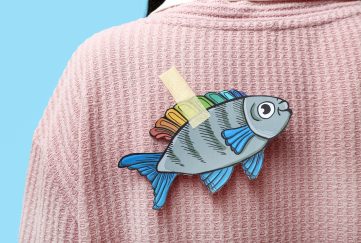An English Invasion
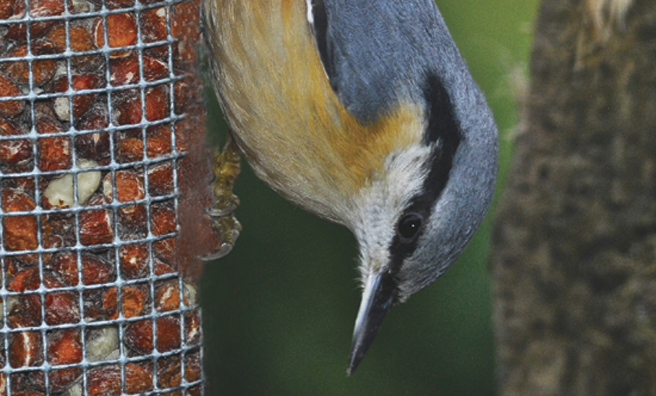
With the 500th anniversary of Flodden and the 700th anniversary of Bannockburn behind us, you should know that Scotland is being invaded by the English yet again.
It is the old familiar story, a great gathering of the English host just over the Border in Northumberland and Cumbria, then at the critical moment a decisive push north.
You should also know that the Borders, Dumfries and Galloway have already fallen, and a two-pronged thrust is sure to claim Ayrshire and the Lothians. After that, who knows where they will turn up next, for it seems that where they encounter no competition and no resistance their northwards spread is proceeding at remarkable speed.
All of a sudden there they were, wearing their black Lone Ranger masks
I have seen them this autumn at Kilmahog near Callander, skulking upside-down in the woods by the Leny. They were part of an advance raiding party, I would guess, just two of them disguised by the fact that they were in a mixed flock of sparrows, finches, spotted flycatchers and tree creepers. And all of a sudden there they were, upside down on the same trunk, wearing their black Lone Ranger masks and decked out in the ancestral colours of their race – blue and white and a faded pinky orange.
Nuthatches. What did you think I was talking about?
It was a dull day, it had just begun to rain, and I had discovered that my waterproof jacket was in the car rather than the rucksack. I retreated into the generous hospitality of an oak with a substantial and multi-layered canopy, and watched more or less unscathed while the rain thundered into the river. Just as it began to ease I heard the flutter and cheep of small birds high in the canopy, and there are few more frustrating ways to watch birds than to stare up through cross-hatchings of leafy, dripping branches or into falling rain.
The nearest of the flock were an adult spotted flycatcher and one of its fledglings demanding food it looked quite capable of catching for itself. I had an unobscured view for all of ten seconds. Then a tree creeper drifted down looking a little like a discarded autumn leaf until it attached itself to the base of an oak and began bouncing upwards, slowly spiralling up the trunk as it climbed. Then I saw it passing a nuthatch on the way down.
Nuthatches seem to be mostly upside down
If you don’t know nuthatches (and the chances are that unless you live south of the M8 you don’t), they seem to be mostly upside down. They sort of do what tree creepers do, but as often as not they do it going down the tree trunk, head first. I have never read or heard of a convincing explanation of why they do that, but it does look rather odd. I was trying to think of other species that do it, and all I have come up with is squirrels.
They possess an uncanny ability to look upwards while their bodies are pointing vertically downwards
They share with tree creepers the character traits of disproportionately large feet and beak. They also possess an uncanny ability to look forward or even upwards while their bodies are pointing vertically downwards, which suggests an unusually flexible neck.
The nuthatch I was watching stopped in its downwards upside-down journey and did just that, lifted its head beyond the horizontal then turned it sideways to look back up the tree it was descending, and following its line of vision I found the second nuthatch ten feet higher up, and upside down, naturally.
The rain grew vigorous again and the birds disappeared with the rest of the flock, which I could see scurrying away through gaps in the treetops, and I was left to my own thoughts, which included the realisation that this was the first nuthatch I had ever seen in the Highlands, albeit only a mile or so in. But a few weeks before, my friend Polly Pullar had one in her garden near Aberfeldy, and another friend, Keith Graham, had one in his garden near Port of Menteith just to the south of the Highland Edge. One has lingered from time to time in Balquhidder Glen a few miles to the north.
The south of Scotland only recorded its first confirmed breeding in 1989
None of that is conclusive proof of a determined effort to colonise the southernmost Highlands, but it fuels the intrigue with which Scottish ornithologists have regarded the nuthatch for a very long time. The south of Scotland only recorded its first confirmed breeding in 1989, and it was only in the 1960s that nuthatches moved into Northumberland and Cumberland, both of which apparently filled up within about 25 years. Scotland’s Border country is now host to a substantial coast-to-coast population, with particular strongholds at the Hirsel and at Floors Castle. The last time I saw nuthatches (which was also the first time) was near Berwick a few years ago where an estate had set up a bird-feeding station. I counted about twenty in no time at all.
But there is some evidence to suggest that this is not so much a new colonisation as a return to old haunts. Statistical Accounts both old and new have placed the bird in Kenmore, and in 1807 at Tannadice in Angus. Throughout the 19th century there are periodic records that hint at the possibility of a settled population. The Duke of Argyll, who for reasons best known to himself tried (and failed) to introduce American red-winged blackbirds at Inverary in the 1870s, had another go, this time with nuthatches, in 1879. The outcome is recorded in a letter dated February 1889:
“I may mention that I have failed also in, perhaps, a more likely attempt which was to introduce into the large woods of this place the Common English Nuthatch. I got from a Dealer in birds at Brighton a good many couple of these birds and turned them out in most suitable tracts of old timber. Not one of them was ever seen again.”
The Scottish nuthatch population continues to double itself every two years
It is perhaps worth pointing out to the present Duke that on the off chance his mind is straying in the same direction as his ancestor, he will be well advised just to wait, because if, as seems likely, the Scottish nuthatch population continues to double itself every two years, they will be around sooner rather than later.
The Tay could also see a huge influx over the next few years
Two things seem to be essential to their conquest of new territory. One is mature deciduous woodland, especially oak woods (and there is good evidence from the Borders that if there are good supplies of yew trees around, so much the better) and they consistently turn up in old country estates and in ancient woods on steep river banks. The other is rivers. The original Scottish Borders population expanded by way of the Tweed and its tributaries. The Annan has conducted them from the Solway as far north as Moffat. The Forth would appear to be propelling them towards the Trossachs, and if Killin, Aberfeldy and Angus are on their radar (and there are records in the 1970s from Invergowrie on the edge of Dundee and from Perth) then the Tay could also see a huge influx over the next few years.
There were many sporadic records along the Highland Edge through the 60s and 70s, enough for some ornithologists to consider the possibility that there had been a small and unseen resident population towards the north of the central lowlands, but if that is true, what happened to it? No-one knows, which rather adds to the intrigue factor that surrounds the bird.
Not much in the wildwood is blue
This time, it looks as if the nuthatch is here to stay, which is a delightful prospect for several reasons. Firstly, it is a little charmer, and brings a splash of unusual small bird colour to our woods and bird feeders. Not much in the wildwood is blue. It also has a slightly villainous aspect because of the black-mask-like eyestripe. Secondly, it has a novel feeding technique of jamming a nut into tree bark then hammering it with its beak (the nuthatch beak is a hammer whereas the tree creeper’s is a down-curved sickle). Thirdly, there is that upside down thing, which simply makes you smile like an idiot.
They like old woodpecker holes to nest in, and they can be induced into bird boxes. They are prolific – anything between six and twelve eggs. They use mud to remodel the sides of the hole to the width of one nuthatch, a means of deterring larger predators, although I can’t see dried mud holding out for long against a pine marten like the one that had left its signature in the middle of the small path along the edge of the Kilmahog woods. They have been known to overdo the mud work so that the nest hole becomes too narrow for a nuthatch, a level of competence that brings my own DIY capabilities effortlessly to mind.
So bring on the English, I say, and let’s do what we always do, which is to welcome them with open arms.
- An adult American red-winged blackbird
- Deciduous woodland and rivers attract the species
- A Tree Creeper
- Floors Castle in Kelso is a stronghold for nuthatches
- A nuthatch in its unique upside-down stance
Nuthatch facts
- Unlike the tree creeper, which only moves up the trunk of a tree, nuthatches will move both up and down.
- Large gardens with oak trees provide the best habitat for the birds.
- The name of the species comes from nut hacker, reflecting the bird’s method of opening up nuts by jamming them into a crevice then hammering at them with their beak.
- The birds seldom travel far from where they hatch and are very territorial.


